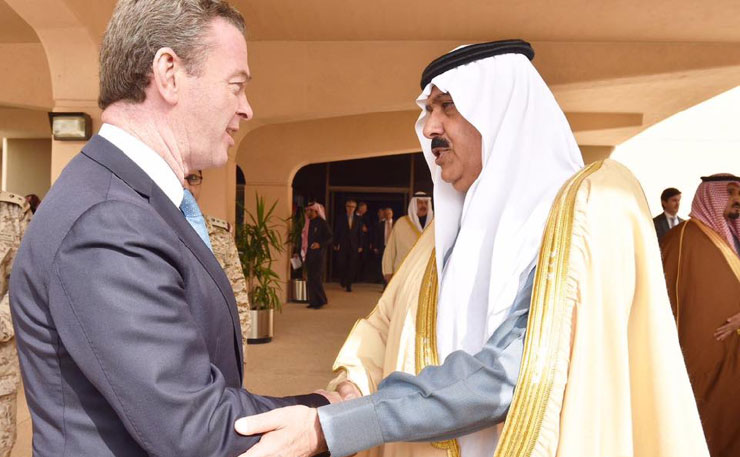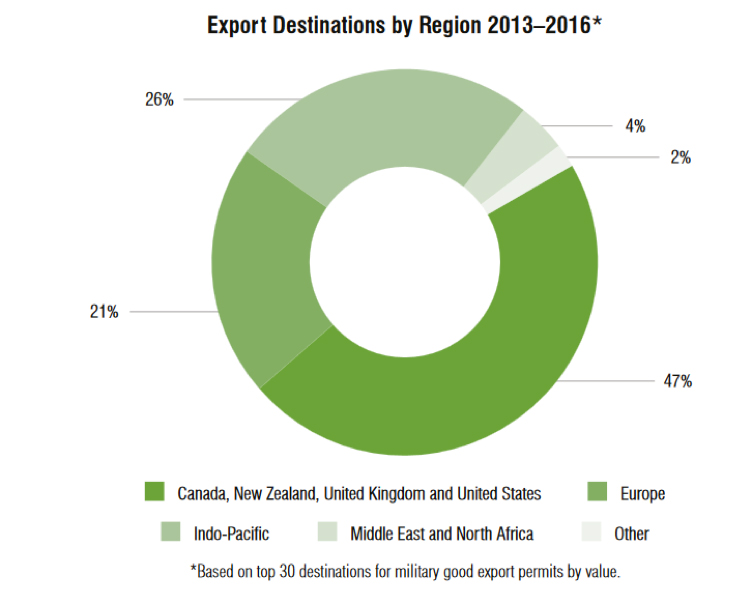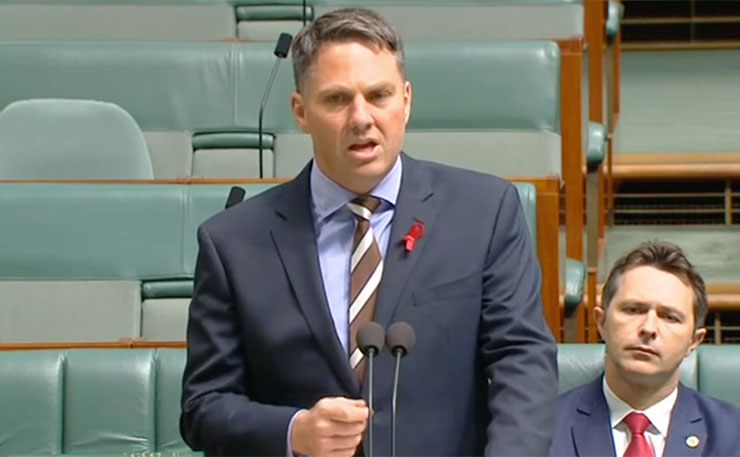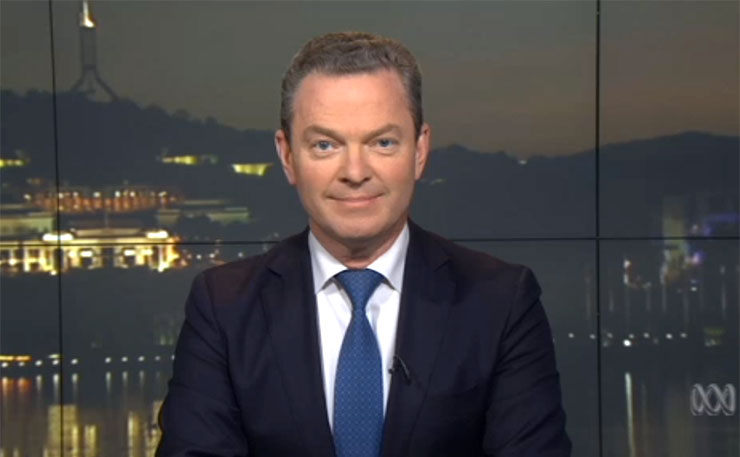The Minister for Defence Industries this week unveiled a strategy he hopes will make Australia a Top 10 weapons manufacturer. Michael Brull breaks it down.
The Federal Government recently unveiled its new “Defence Export Strategy”. The plan is to expand military exports, which presently make some $1.5-2.5 billion per year. The plan is to dramatically increase those exports, so that we enter the top 10 military exporters in the world within a decade.
We were reportedly previously only ranked number 20. The government has announced it will spend a whopping $200 billion on the military over the next decade. Seems almost strange that a Coalition government purportedly so disturbed by the deficit would want to spend that much money on what is fundamentally a bad investment which won’t benefit most Australians.
The new military exports “strategy” comes with an 84 page report with little in it. The government plans to spend about $90 billion on naval ships and submarines. It discusses some of the companies that will be involved in our military exports, like Thales, Liferaft Systems Australia, Thomas Global, and Ferra Engineering. There’s some waffle and boilerplate material about how our exports will contribute to the “security of other countries”, that we will promote “stability” too, and it will all be consistent with promoting and protecting human rights.

In 2014, Australia ratified the Arms Trade Treaty. Theoretically, Australia is required to consider whether our military exports will have a negative impact on human rights, or peace and security. If any of those conditions are breached, then Australia is obliged to reject the export application.
The report vapidly asserts that Australia “rigorously implements its Arms Trade Treaty Obligations, which are an important part of the assessment process for defence export applications.”
This is hard to take seriously. In 2016, Australia approved four military exports to Saudi Arabia. In June last year, it approved five more military exports to Saudi Arabia. Aside from the strangeness of pretending human rights are at all compatible with arming one of the most oppressive governments on the planet, Saudi Arabia is currently waging an extremely brutal war on Yemen, which has left some seven million people on the brink of famine.
Former Senator Scott Ludlam tried in the Senate to get the government to answer basic questions about our military exports to Saudi Arabia. They refused.
Ludlam asked if the Department of Defence took a position on whether human rights abuses were occurring in Yemen. The response: “I do not think that is really a question that I can answer. I am not a Yemen expert.” Despite this agnosticism, the Department had “no concerns” about our military exports to Saudi Arabia. They also refused to disclose the criteria on which such decisions were made.
The government claimed it would cause harm to national security and the commercial advantages of Australian companies if they disclosed anything about our military exports to Saudi Arabia. In July last year, Minister for Defence Industry Christopher Pyne bragged of the plan to expand our military exports. And he casually mentioned an example of those exports: the Nulka decoy system that protected the USS Mason from the Houthi rebels in Yemen.
There isn’t much in the report worth reading, but it does have a bit of material on our military exports.

It notes that 47 percent of those exports go to Canada, New Zealand, the UK and the US. Another 26 percent goes to the “Indo-Pacific” region, and 21 percent goes to Europe. Currently some four percent goes to the Middle East. Our two “major partners” are Saudi Arabia and the United Arab Emirates, according to the Department of Defence.
In terms of what we export, between “2013 and 2016, the top five categories of approved permits for military exports by value were: electronic equipment; military technology; military parts and components; target acquisition, range finding, surveillance or tracking systems; and military software”.
In terms of the strategy, the hope is to expand our exports to the other four English speaking countries, which is the “highest defence export market priority”. The Indo-Pacific region is also a “high priority” area, with South Korea and Japan singled out as strategic partners. India is also mentioned, though it’s recognised as a “challenging market”. Europe is similarly recognised as a “challenging market” due to high barriers and “significant domestic competition”.
As for the Middle East, it is also a “priority market”. There are a “range of opportunities”, and Israel is singled out in this regard. Other countries may present challenges – they operate “substantial offset policies and variable procurement strategies”. Australia will supposedly “continue to ensure” that exports are “consistent with Australia’s international obligations and commitments”. Sure.
Labor demonstrated its heartfelt and principled concerns, with shadow spokesperson Richard Marles saying, “Today’s announcement is playing catch-up footy, having done so much on the part of the Coalition to damage the defence industry in this country, and to damage industry more generally”.

Amnesty complained that, “We are seriously concerned about indications that the Australian Government intends to become a major arms exporter to volatile regions that have appalling human rights records”. This is a possibly hopeful development, given that it attempted to retract its own position opposing military exports to Saudi Arabia.
That said, “concerned” is basically a substitute for an actual position. A human rights organisation can more typically be found “condemning”. In Amnesty’s case, every other Amnesty in the world has demanded an arms embargo on Saudi Arabia. Our version simply wants the government to disclose the “exact nature” of those exports.
Also “concerned”, according to Fairfax, is Oxfam: “Oxfam Australia expressed specific concerns that the nation could export weapons to Saudi Arabia, which is heavily involved in the war in Yemen.”
In an email exchange last year, Oxfam also noted that it was “concerned” by reports of military exports to Saudi Arabia. It never took a stronger position on those exports. That is about the extent of its position on a war that has left some seven million people on the brink of famine.
This is also in contrast to its overseas counterparts. For example, the British Oxfam was “hugely” disappointed the High Court had allowed the British government to continue its military exports to Saudi Arabia. After all, “So much evidence [was]presented in this case of the devastating impact on Yemen from selling arms to Saudi Arabia. There is a clear moral case for the Government to suspend its sales.”
It is not hard to envisage how much could be achieved if the government redirected the $200 billion to address socio-economic problems in Australia. Yet there is no political environment let alone movement which will seriously challenge this development.
Donate To New Matilda
New Matilda is a small, independent media outlet. We survive through reader contributions, and never losing a lawsuit. If you got something from this article, giving something back helps us to continue speaking truth to power. Every little bit counts.




